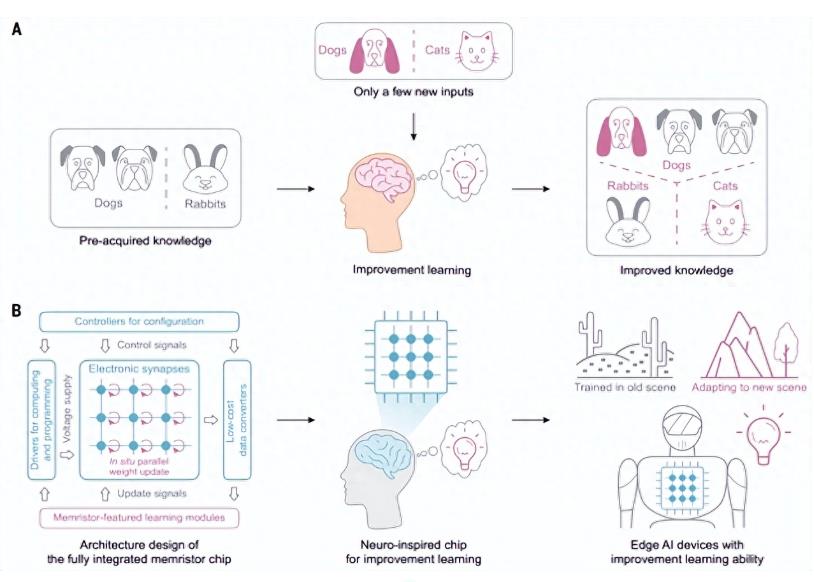Global First, Significant Breakthrough in Chinese Chip!
Global First, Significant Breakthrough in Chinese Chip! Tsinghua University Team’s “11-Year Chip-making” Achievement Featured in Science.
A chip that can both store memory and compute has been created by a research team from Tsinghua University in China.

This is the world’s first fully system-integrated chip that supports efficient on-chip learning (machine learning can be completed directly at the hardware level) with memristor storage-computation integration.
The concept of storage-computation integration emerged as early as the 1970s. After an “11-year long march” of scientific research, the team from Tsinghua University finally succeeded!
The chip, while protecting user privacy, also possesses autonomous learning functions similar to the human brain, with an efficiency improvement of about 75 times compared to dedicated integrated circuit systems under advanced processes.
The achievement of this chip has now been featured in Science.
Tsinghua University’s Qian He and Wu Huaqiang’s team started researching the use of memristors for storage as early as 2012.
By 2020, the team made a significant breakthrough—they built a complete storage-computation integrated system consisting entirely of hardware based on multi-array memristors. This system efficiently ran convolutional neural network algorithms, successfully verifying image recognition functions. Its efficiency is two orders of magnitude higher than that of graphics processor chips, greatly enhancing the computing power of the computing device, and achieving complex calculations with lower power consumption and lower hardware costs.
In this research, Qian He and Wu Huaqiang led the team to innovatively design a new general algorithm and STELLAR architecture suitable for efficient on-chip learning with memristor storage-computation integration. The solutions in this architecture include its learning algorithm, hardware implementation, and parallel conductance tuning scheme, which is a general method to promote on-chip learning through the use of memristor crossbar arrays.
It is understood that the tasks that this chip can execute include motion control, image classification, and voice recognition. Under the same tasks, its power consumption is only 1/35 of ASICs, while it is expected to achieve a 75 times improvement in energy efficiency.